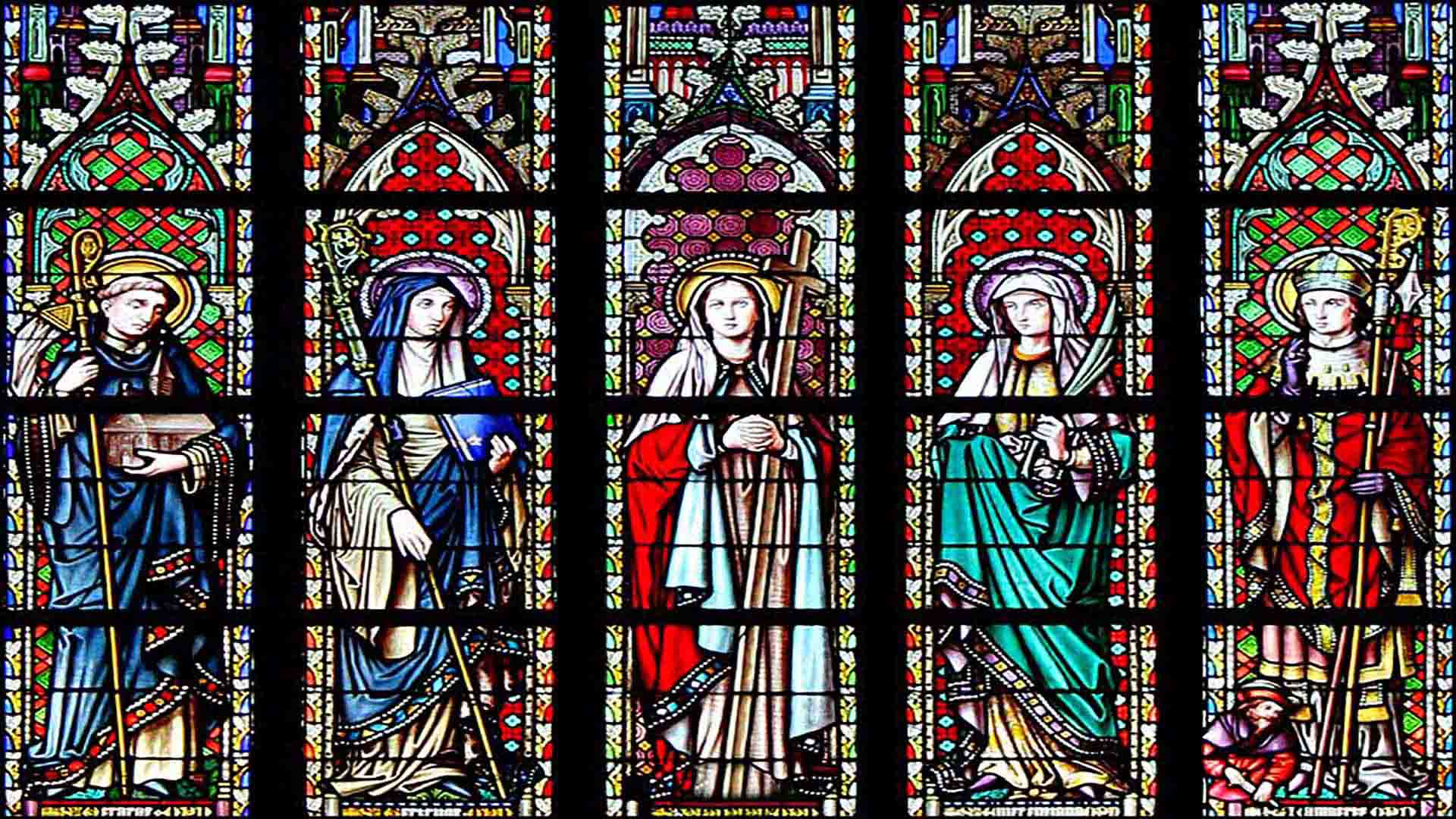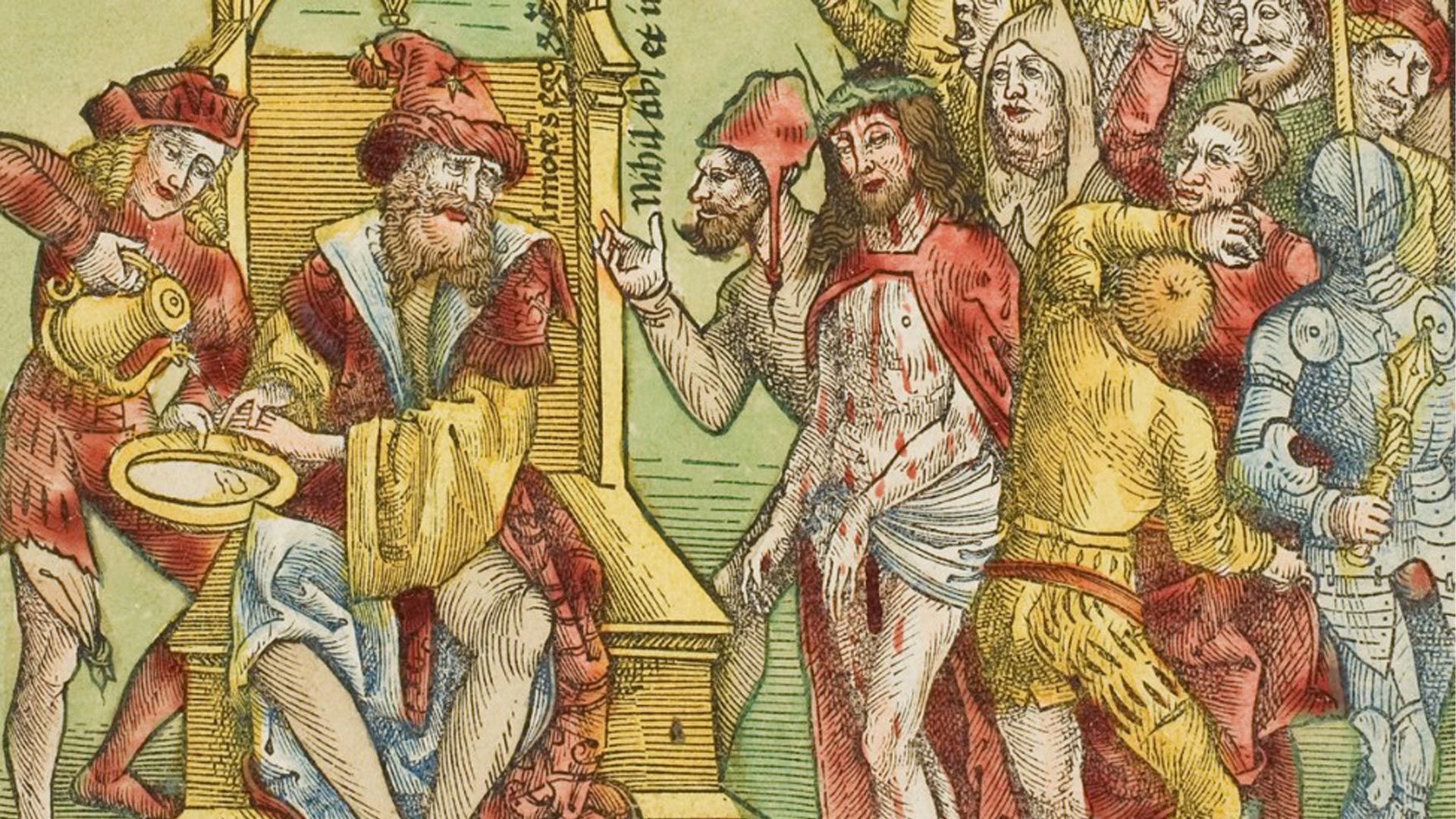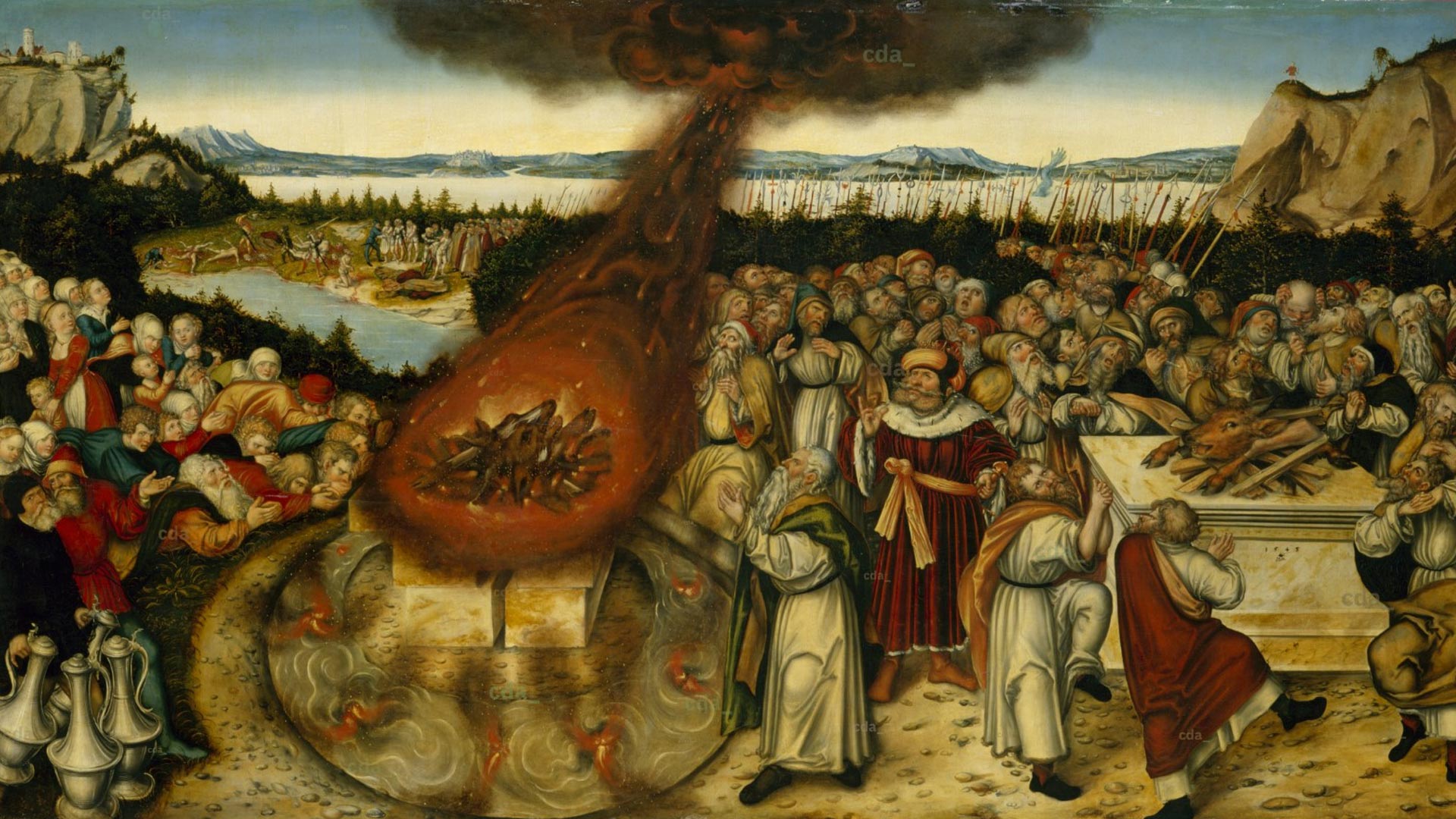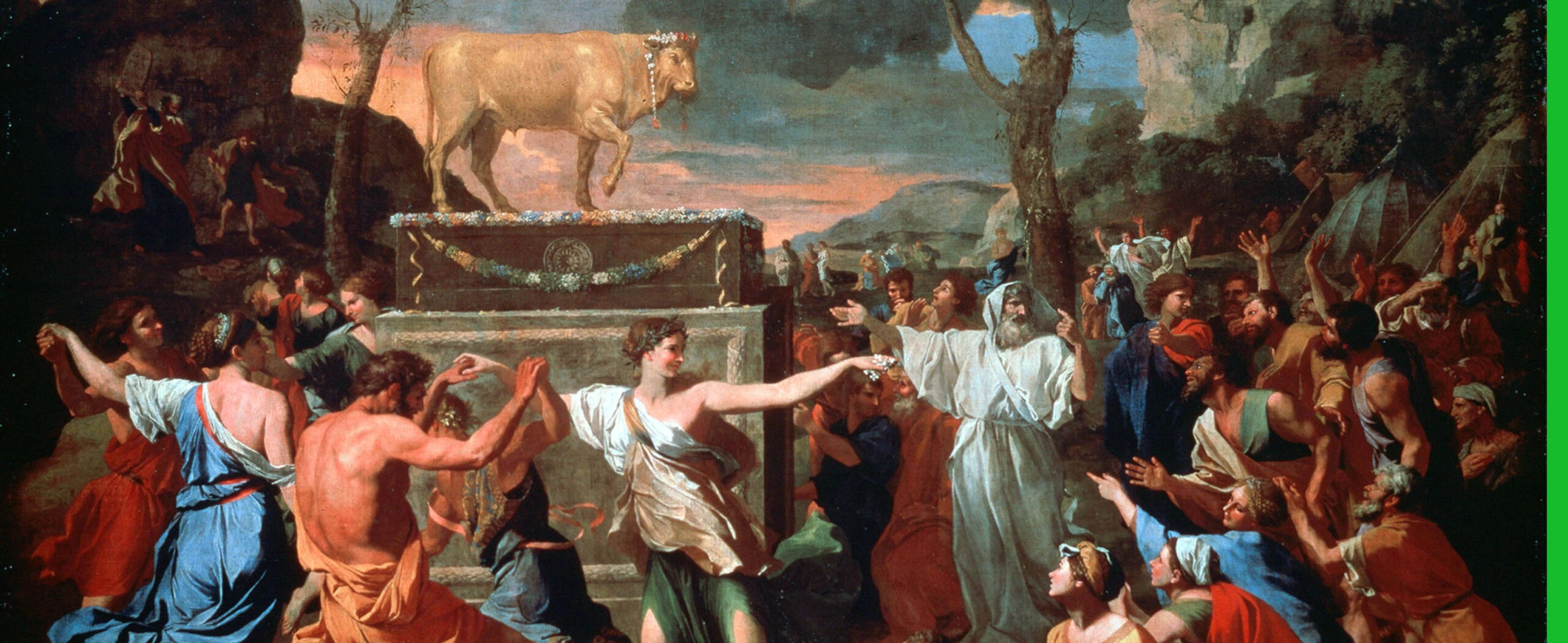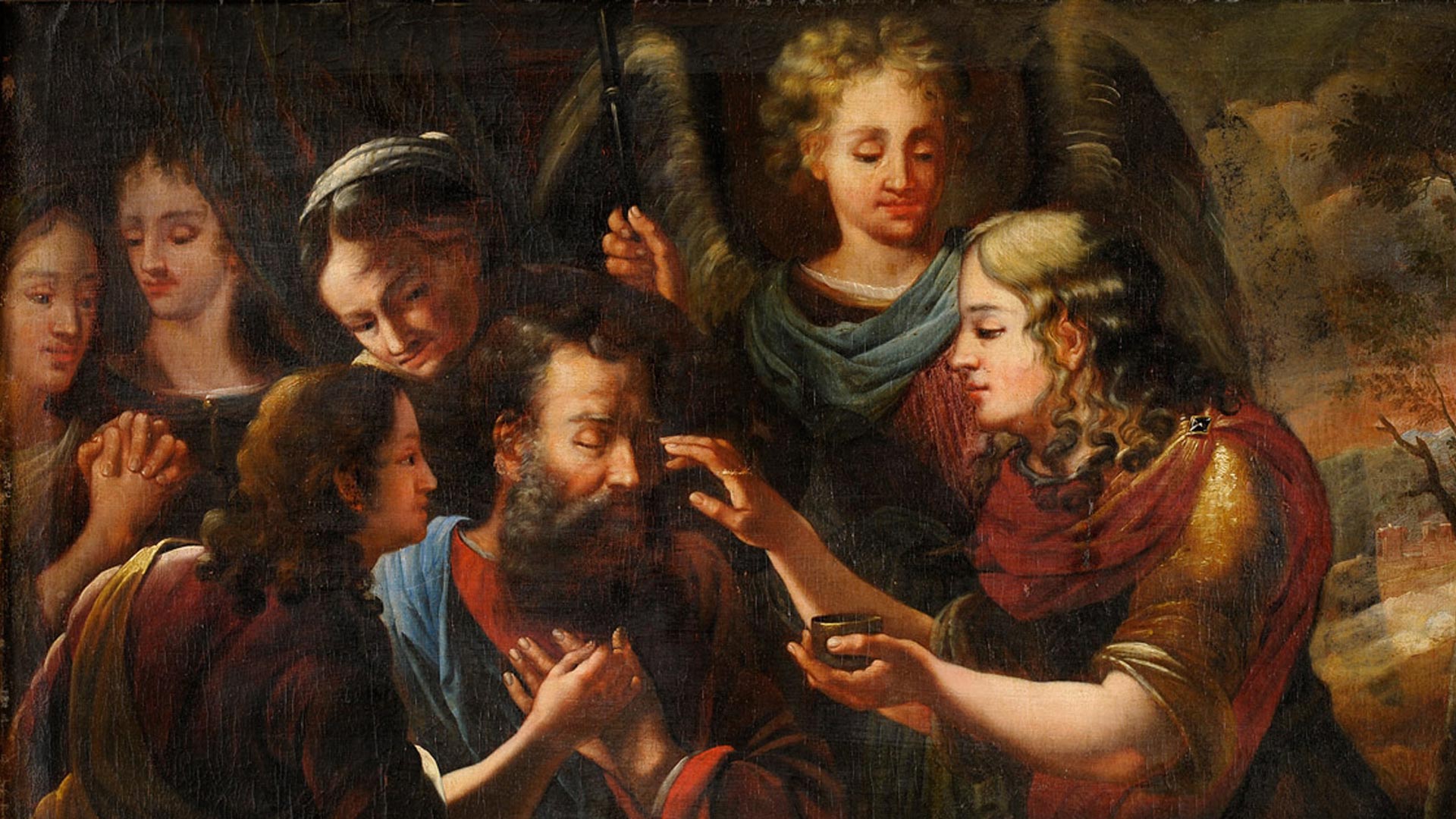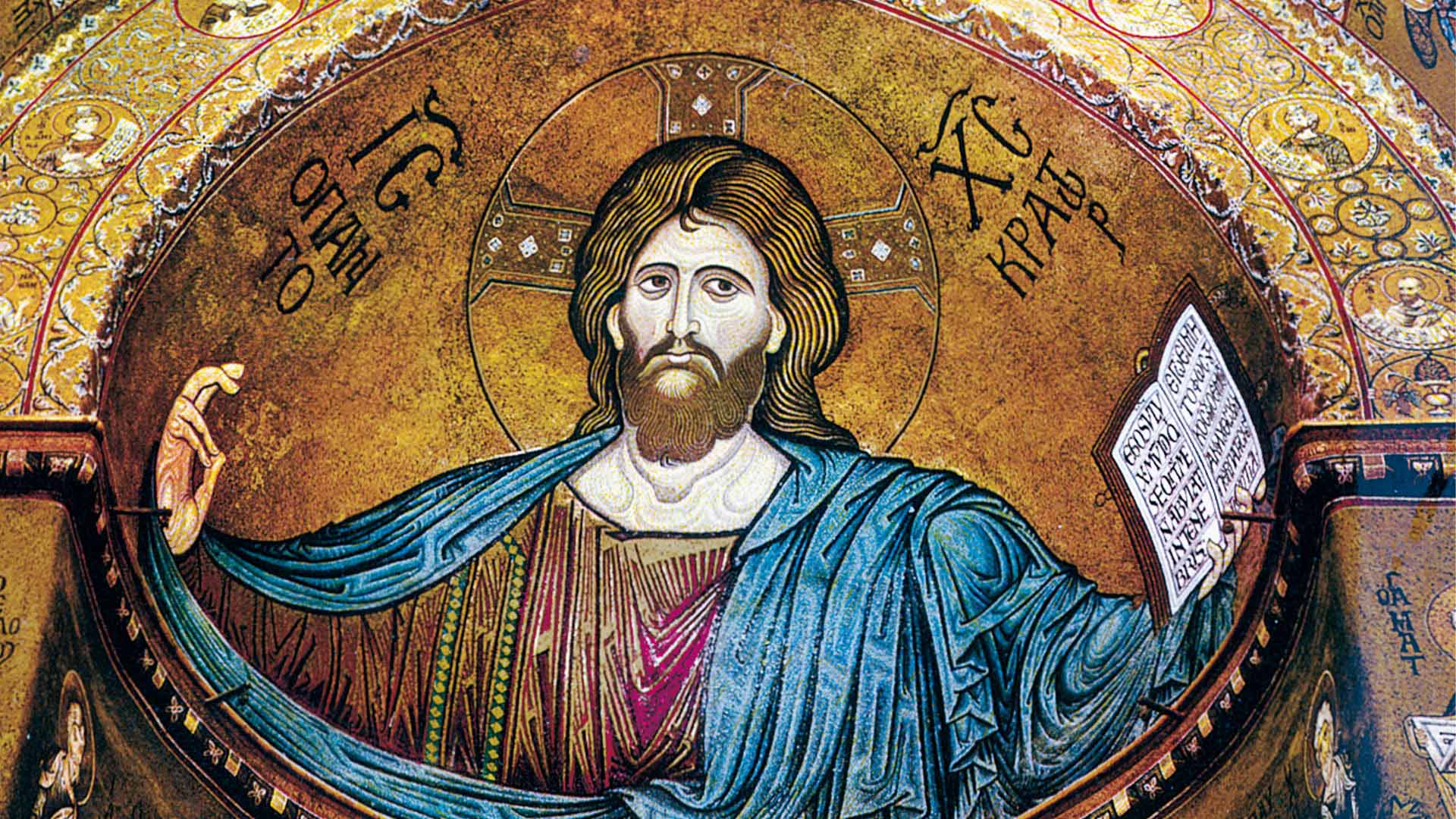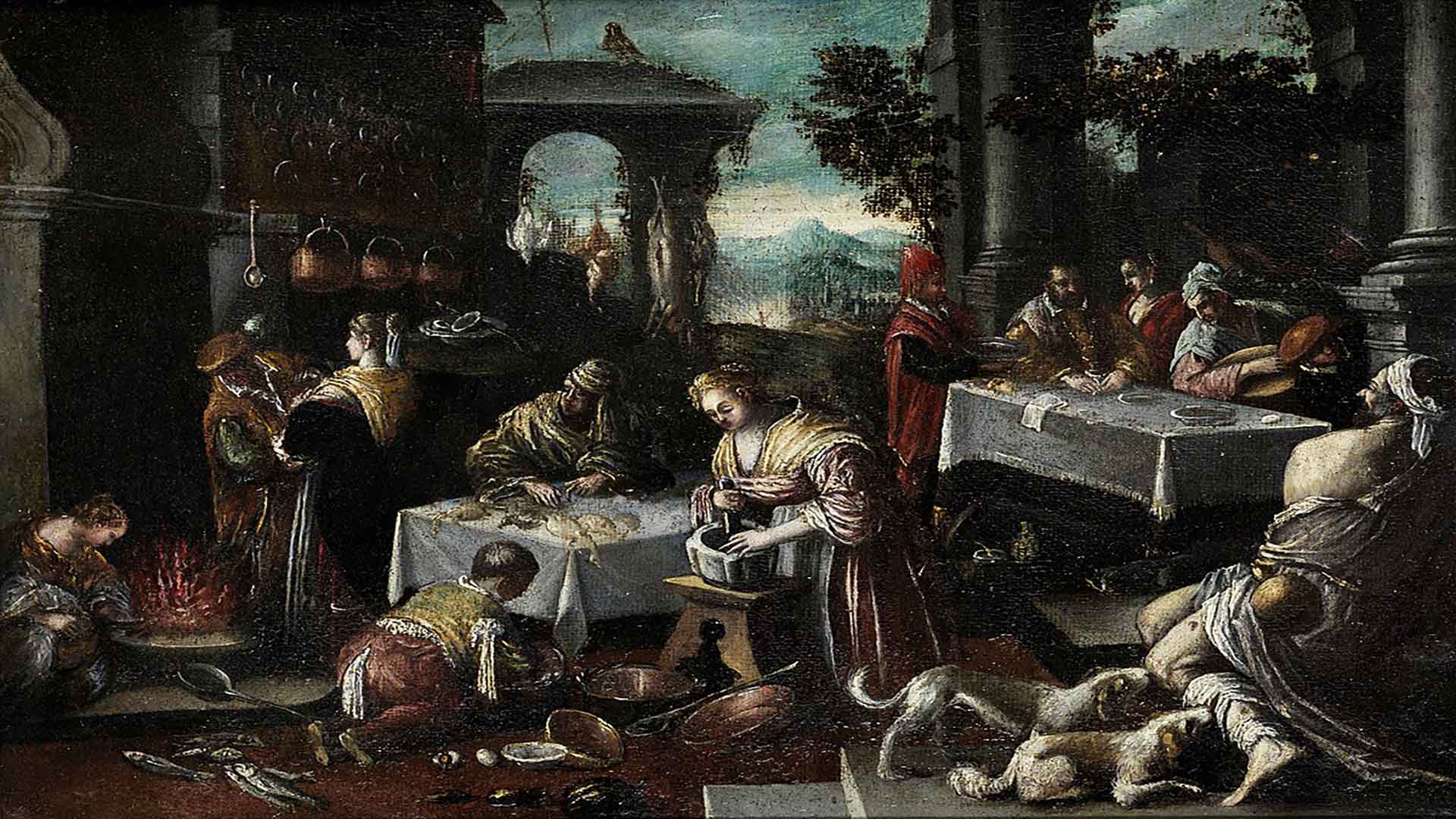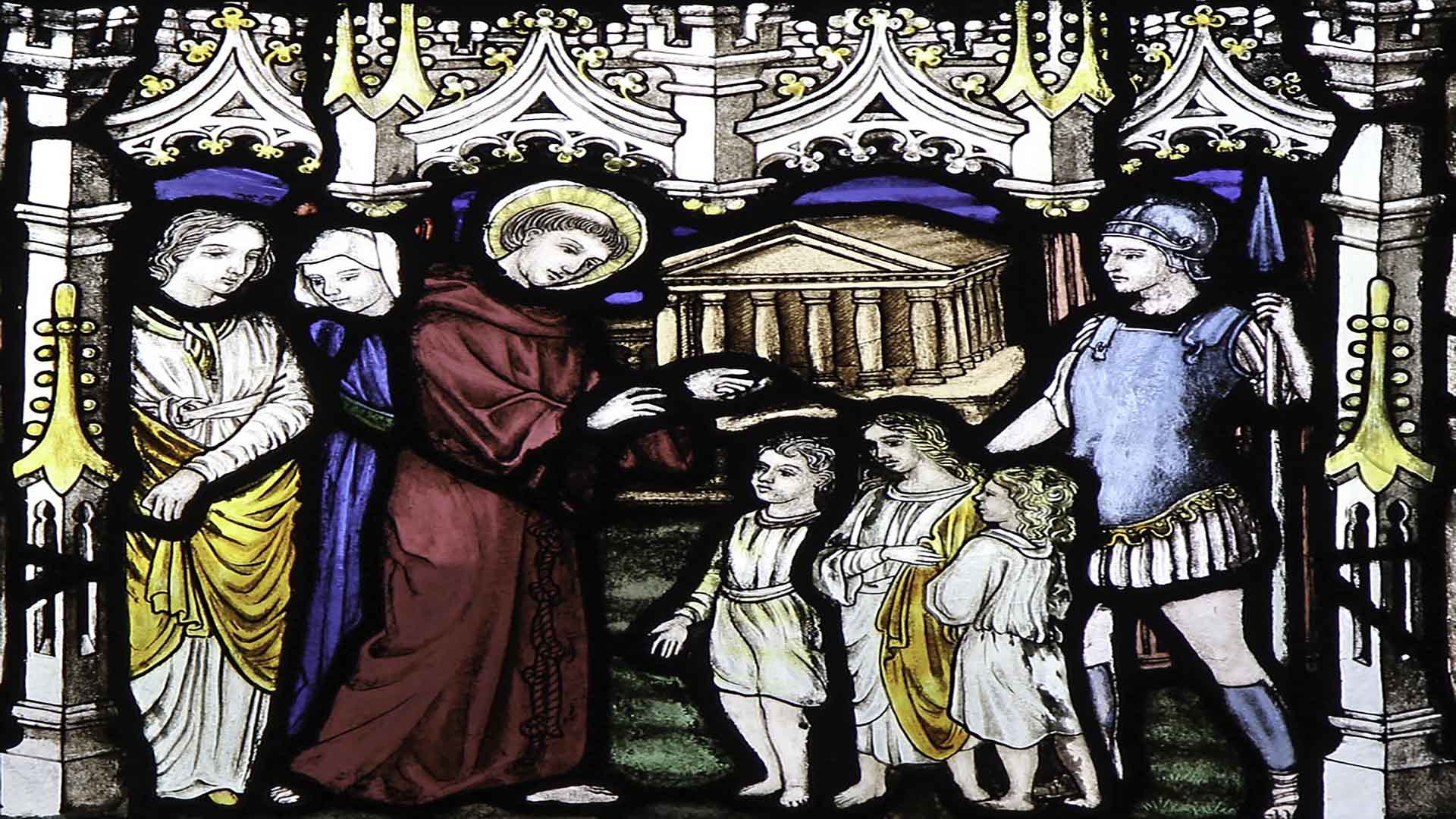Persevering in Prayer
Alexander Pope, one of Britain’s most famous Catholic poets, wrote, ‘Hope springs eternal in the human breast.’ This is now an oft-repeated quote, but just how many of us realise that prayer sustains hope? Today’s readings dwell on the need to pray at all times—a theme at the heart of Christian living. Saints and spiritual masters down the ages have discussed it at length.
The manner in which the First Reading (Ex 17: 8-13) describes the struggle between the Amalekites[i] and the Israelites may lead some to believe that prayer is a magical formula or that God has his favourites whom He grants all requests. Notably, while Moses directed Joshua, his successor, to engage Amalek in battle, he himself kept watch and prayed incessantly for the success of his nation’s efforts.
God does not save us unless we partake of our own salvation. Therefore, we must do what we can before expecting God and our fellow humans to help us. Moses held supernatural trust and confidence in the Lord. Aaron, his elder brother and first High Priest of Israel, and Hur, an Israelite leader, possibly of the tribe of Judah, who served as a companion to Moses and Aaron, helped him. Their collective effort teaches us that when we have done our best, God does the rest!
In the Gospel story of the Unjust Judge (Lk 18: 1-8), Jesus impresses upon his disciples the need to always pray without becoming weary. The parable bears a close resemblance to that of the Friend at Midnight (Lk 5: 8). Elsewhere, Jesus says, ‘Ask, and it shall be given you; seek, and you shall find; knock, and it shall be opened unto you.’ (Lk 11: 9). Yet, we should not take God for granted. We must ensure that our prayer is worthy and pleasing to God; we must pray in humility, faith, and perseverance.
That’s not all. A key aspect of prayer is to talk less and listen more; not try to bend God’s will to ours but our will to His. An indulgent parent may grant their child any request; but not God, who will concede only what is in our interest and in keeping with His omniscience. Hence, St. Augustine suggests that we pray as if everything depended on God and work as if everything depended on us. His wise counsel can bring us peace of heart.
In a godless world, many may doubt the efficacy of prayer, but they are the poorer for it. It is not a good idea to challenge God, who has us in His hand. Our pride prevents us from acknowledging God’s presence and works. Thankfully, those who are open to His loving kindness will stoutly say with Tennyson: ‘More things are wrought by prayer than this world dreams of’.
It is absurd to deny or forget that we are beneficiaries of God’s loving kindness. However, we are quick to say that corrupt men and women enjoy a great time on earth and demand that God show His justice forthwith! He will, in His time. Meanwhile, we must acknowledge the miracles He has wrought in our lives. God never forgets the labour of love done to honour Him. ‘He will see to it that justice is done for them speedily.’
In fact, the Evangelist makes a cutting retort to ungrateful humans: ‘When the Son of Man comes, will He find faith on earth?’ These words are an eye-opener to the present state of the world, whose words and actions often affront God’s Holy Name. Woe to us if our love for God has grown cold! In the Second Reading (2 Tim 3: 14–4: 2), St. Paul exhorts us to ‘remain faithful to what you have learned and believed, because you know from whom you learned it’.
The Sacred Scriptures and Tradition are our rock, guiding us to salvation through faith in Christ Jesus. We ought not to twist them and cosy up with the New World Order; rather, we are to use the Scriptures ‘for teaching, for refutation, for correction, and for training in righteousness’. The Apostle to the Gentiles urges us to ‘proclaim the Word; be persistent whether it is convenient or inconvenient; convince, reprimand, and encourage through all patience and teaching.” We are called to serve the Lord—to be ‘joyful in hope, patient in affliction, faithful in prayer” (Rom 12: 12).
Banner: Five saints depicted in the Eglise du Sablon, Brussels
[i] Amalekites were the descendants of Amalek, the grandson of Esau who was the twin brother of Jacob (later called Israel). The Amalekites became a nomadic tribe and the enduring enemy of the Israelites. This is remembered by the Jews to this day, but historically its occurrence is debatable. Hence, today, the battle is just symbolic of evil and perpetual hostility.
Laity and Clergy in Goa: Moods and Expectations (3/3)
October 10, 2022Save our Faith
As we bring the present set of sentiments to a conclusion, we reiterate that we wish to see our faith practised in accordance with Church doctrine. People are thirsty for the Living Bread and the Living Water; they feel repulsed when they get a snake or poison instead. As Jesus said, ‘And which of you, if he asks his father bread, will he give him a stone? or a fish, will he for a fish give him a serpent?’
It goes without saying that this blogpost, like all the previous ones, is about OUR Faith – and not others’ beliefs. We are not questioning the constitutional freedom of others to follow their own beliefs. And they too, like us, may not wish to see syncretic practices disfiguring or diluting both sides. In short, ‘good fences make good neighbours!’
Let’s, therefore, not mix spirits and create a strange concoction. The subject at hand is of supreme importance and never too much to dwell on. It’s a matter that impacts the foundations of our Faith and, consequently, Eternal Life, and so never too much to ponder on.
Which brings us to our request to the Authorities: feel the pulse of the laity. Or, as the Pontiff has said, listen to your people!
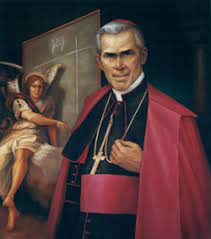
Much earlier, the Venerable Fulton Sheen did not hesitate to state something that, today, could appear “arrogant”: ‘Who is going to save our Church? Not our bishops, not our priests and religious. It is up to you, the people. You have the minds, the eyes, and the ears to save the Church. Your mission is to see that your priests act like priests, your bishops act like bishops, and your religious act like religious.’
It is in this spirit of reverent and filial appeal to His Eminence Cardinal Ferrão, that we say: Listen to our voice. Vox populi, Vox Dei!
Virgin Most Faithful, pray us! St Thomas the Apostle, pray for us! St Francis Xavier, pray for us! St Joseph Vaz, pray for us! Holy Souls of our ancestors converted to the Catholic Faith, pray for us! May God save our Faith!
And here we end our first catalogue of sentiments. Read on!
**** […] beautifully narrated but shocking. Are you sure it’s one of our priests or someone impersonating him to mar the reputation of the Catholic religion! […] If priests do not obey the Commandments, then what teaching would they give their flock? Where is our religion heading? [..] I sincerely hope and pray that the matter will be clarified by the ecclesiastical authorities in the archdiocese and by the CBCI. If not, I can just visualize the effect this will have on our youth… Prayer is our only weapon. – SP – My comment: The name of the priest and the proceedings are on record.
**** Concordo plenamente e reforço o que expressou no seu post.
**** […] What the priest is doing here seems to be of Syncretism (?) not of interfaith dialogue.
**** We have visited and greeted our Hindu friends for Ganesh Chaturthi even during the Portuguese days when we were children, much before we heard such big words as 'inter-religious dialogue'. But, of course, we did not fold our hands and pray in front of the idol of Ganesh and pose for photographs. If our dear priests (and nuns) could observe just this simple rule of good sense, they would avoid spreading error and creating controversy.
**** Who is this priest and where is this place? Can one worship two Gods? What’s this nonsense! What more is left? Such a shameful act! And that’s what makes God so angry. This priest should be suspended, as priests are in the form of Jesus Christ Himself, especially when they serve Mass at the altar.
**** It looks like a policy that ‘if you can't fight them, be with them. Don’t antagonize them’. Not joining them by changing to their faith is to live peacefully. – My reply: If we respect our identity, others will also respect us. Those who are not happy should leave the Church and join the other side. We can’t keep our legs in both the boats.
**** This is very sad and dangerous on their part. First it was priests singing bhajans and now this! I had in fact stopped going […] to people’s houses long ago as some of them expected [me] to bow before the idol.
**** How far some of our people go!
**** [‘Does our Sensus Fidei need Renewal?’] is relevant to caution our laity and priests. Well researched. – PRIEST
**** Já que aos padres não interessa proteger e disseminar, tem de ser os leigos a defender a Igreja Católica…. É pena que a nova geração dos padres não tenha queda académica no seu ADN. Acho que não temos pessoas para os orientar.
**** […] Agree with what you have stated. I too have interacted personally with some priests and expressed my strong concern in this regard. We have to be vigilant and alert and let the priest know of our deep concern and anxiety in such matters. They need to feel the pulse of the laity. I get the impression that instead of listening and acting appropriately they have…. [truncated message]
**** Excellent [ref. to ‘Does our Sensus Fidei need Renewal?’]. Remarkable, such extensively theologically researched… I too got enlightened with many of the Church documents. – PRIEST
**** Sadly, this issue is slowly distancing the Church leadership from the lay faithful and evils of pride and ego may only give Satan a broad entry.
**** […] I’m hoping our clergymen read this and get our Church back on track.
**** […] Read your response to Renovação’s tirade. […] If priests and their sheep really worshipped the idol it is preposterous. I got the forward about this event from a hard core ‘Believer’ who thus picked up one more stone against the Catholic Church. Your response to Renovação is sincere, highly well informed and extremely well written. You have spoken for the community. […]
Banner: https://www.historytoday.com/history-matters/strange-afterlife-pontius-pilate
Laity and Clergy in Goa: Moods and Expectations (2/3)
In continuation of yesterday’s post, here are the final lines of the PRIEST’s letter, saying that the Catholic priests have been “an object of acerbic criticism by probably some vested interests who have found the social media very handy for the dissemination of their bilious anger against Catholic priests and the Church in general.”
‘Vested interests’? A ruse to divert people’s attention from pressing issues! The enemies of the Church are not outside but inside. It is not only the ‘smoke of Satan’ that has entered the Church; it is Satan himself who is lurking in our midst, and many simply don’t wish to notice his presence.
Why blame the social media? Another convenient ruse. Doesn’t the Archdiocese have a Centre called the Diocesan Centre for Social Communications Media? Don’t priests individually use social media to disseminate news and views? And how much of it is the ‘Good News’? A case in point are the views expressed by the clergymen on this forum: often ambiguous, sometimes contradictory, rarely the full truth.
‘Bilious anger’? Nay, Righteous Anger! We are with the Priests as long as they are with God! Let’s speak the truth, and nothing but the truth. Facts are facts; against them, there can be no arguments. ‘Let your speech be yes, yes: no, no: and that which is over and above these, is of evil.’ (Mt 5: 37). That’s the people wish. Vox populi.
Some more comments below show the mood and expectations of the Catholic laity and clergy in Goa:
*** I have sent it to some senior priests. Can something be done or the priest corrected? … I sent it to some top clergy. Let’s pray that they take this seriously. I sent it to a Nirmala sister too. They didn’t answer me. But Sister was upset. She summoned me to Nirmala’s to speak to her… I told her the last post came from Canada and sent by a very good friend who was also an ex-student of Nirmala Institute of Education… And we are concerned about what’s happening… I told her that some lay people and priests too are upset with what’s going on. Inculturation is one thing, but this is crazy. To which she just kept quiet.
*** […] There is a thin line between respecting everyone’s faith and praying to other deities. Total breach of our First Commandment. Really sad.

*** We had a conference for catechists recently at Joseph Vaz Centre, Old Goa, to explain the Pastoral Letter 2022 of our Bishop. The above image [‘One Light – Many Lamps’] was used in the presentation slide by the priest… Through the catechists, they are corrupting our children… Since they started such exercises, has the religious harmony increased or is it more vitiated now than earlier? […]
*** […] Wonder what we could do to educate our priests. I am game for anything.
*** What is happening! So sad. Hopefully there is a […] clarification from Church authorities.
*** Claro, como diz, uma coisa é o diálogo e bom convívio inter-religioso, outro é sincretismo… Ainda para mais, dada a idiossincrasia goesa.
*** […] There is no punishment by our Church. Christian politicians worship idols and break coconuts in front of them. Archbishop has not commented or excommunicated any of them. So, Catholics in general are not cautioned against the consequences. One priest's excommunication without much publicity would send a strong message down clergy and lay persons... It's ridiculous to see things happening around us ... Nowadays, I don't know if you have come across the streets in Panjim... There are these so-called fellowship groups, Born-again Christians going about talking about the Bible, convincing you about things in the Bible... They know the Bible so well that a fool can get mesmerized... I would say that's sheep stealing...
*** I agree with you 100%. I’ve said the same thing time and time again. I particularly condemn the blatant idol worship indulged in by many of our so-called ‘Catholic’ politicians…. But a priest doing the same thing is taking it to another level altogether… I'll be posting your article liberally, both individually and in various groups.
*** This interfaith dialogue has crossed boundaries.... Our priests (some of them) bend over backwards to please […] those who matter. We don't see them coming to our homes at Christmas time, and bowing in front of the crib, for example. If Goa has gone to the dogs, it's the Church to blame. […] I feel quite disgusted with this […] attitude of some of our religious starting with those at Archbishop House.
*** […] I’m aghast that a Catholic priest could do what he’s purportedly doing here. I hope there’s an explanation somewhere.
*** Very true. It violates the very First Commandment.
*** I came across your social media post ‘Elephantine Blunder’. […] The priests did not bow before the idol but prayed to God along with the family without invoking Ganesh. – My comment: That’s instant absolution! Which ‘god’ would he pray to other than the idol itself?
*** It may be for optics, which is also a blunder.
*** It is absolutely wrong to pray before other gods, I agree. However, social visits to people of other faiths during their festivals should be encouraged. It is also unfortunate that inter-religious dialogue has been limited only to organising prayer meets, with no room for inter-religious dialogue of life issues. We have so much in common to work for to establish justice and peace in our society. – PRIEST – My reply: Interaction on the social plane is fine but we can't compromise on the tenets of the faith. Such syncretic practices are an absolute no-no. – PRIEST: I agree.
Banner: https://lucascranach.org/en/DE_SKD_GG1941
Jesus, our Light and our Life
Today’s readings are about giving thanks, glory, and praise to the Lord our God for the wonders He has wrought in our lives… They are about remembering him with gratitude and never taking Him for granted… They are about doing our bounden duty and awaiting the crown of glory when the race is done.
The first and third readings talk about healing. In the First Reading (2 Kings 5:14-17), the Syrian general Naaman goes into the river Jordan, as recommended by prophet Elisha, and comes out clean, his flesh restored like that of a little child. He returns with a present to thank the man of God, who does not accept it, for he was not there to serve himself but the Lord. Extremely thankful, Naaman wishes to carry earth with which to build an altar for the Lord in whom he now believes, in his land of origin.
In the Gospel (Lk 17:11-19), only one of the ten lepers who were cleansed returned to thank Our Lord. An instance of kam’ zalem, voiz melo (once cured, one forgets the physician), a classic case of human ingratitude. The Master Physician notes that the lone grateful man whose faith had cured him is indeed a foreigner – a man from Samaria, a district that was anathema to Israel.
The two stories above are not about physical healing alone; they are about being liberated from sin, yet failing to proclaim the Good News to the world. How many of us who stop everything to ask God for healing and success also stop to thank God on receiving them?
The Anglican-turned-Catholic writer G. K. Chesterton, in his Autobiography, stresses ‘the idea of taking things with gratitude, and not taking things for granted.’ But alas, gratitude seems to be one of those rare commodities in our jet age. It is as if we expect everything as a right, and nothing as a favour. In our self-centredness, no gesture of kindness from another ever touches our hearts. Sometimes, a ‘thank you’ is a mere formality, and when it comes to God, hardly a necessity.
St Paul (2 Tim 2: 8-13) clinches it. He places before us the everlasting model that is Jesus Christ, our Lord. Our Lord is faithful even to the unfaithful – because He can’t be any different. What a noble lesson for humanity! The Apostle to the Gentiles, who, a little earlier in the letter to Timothy, had spoken of the good fight, the race, and about keeping the faith, now uses a fragment of a hymn from his area of evangelisation to convey the same message.
The point is: why do we sometimes deny Him? Why are we faithless and unfaithful? Is it mere weakness, or is it malice? Sometimes we unknowingly get caught up in the web of the evil one. Let us break free. Let us wake up and think. Let us rise and speak. The Word of God is not fettered. Have faith, Jesus is the Light of the World; those who follow Him will have the light of life.
Laity and Clergy in Goa: Moods and Expectations (Part 1/3)
Given below are some of the WhatsApp messages received from members of the laity and the clergy in response to our posts, ‘Elephantine Blunder’ https://bit.ly/3ClZHaP and ‘Does our Sensus Fidei need Renewal?’ https://bit.ly/3SM9zSr, dwelling on an issue that has wounded the core of our Christian being: relativism, syncretism, idolatry… by some of the very people who are supposed to – and claim to – respect and protect it. St Thomas Aquinas in his Summa Theologica says that violation of the First Commandment is ‘the most grievous sin’.
The present catalogue of sentiments does not include general messages of appreciation and support received. Writers’ names do not appear; in the case of Priest writers, the same is specifically mentioned. Some messages have been slightly edited, for clarity; and those straying into other areas have been left out altogether.
Meanwhile, it is reported that His Eminence Cardinal Ferrão has expressed consternation at the turn of events and has justified the laity’s angry outbursts. In his address to the Deanery heads of the Archdiocese, he allegedly condemned idolatry, appealing to his priests to exercise caution when on social visits to people of other faiths. On insisting that Christians use the word ‘Lord’ to refer exclusively to Jesus Christ, His Eminence purportedly said that he does not visualise a repetition of such ugly incidents in the future. Unfortunately, there is still no official confirmation of the sentiments expressed by our Cardinal.
It may be said that in face of such a heinous scandal, an oral warning to the Deans or to the entire Goan clergy is not enough. Verba volant; scripta manent! Spoken words fly away; written words remain. Hence, only a Circular issued to that effect by His Eminence condemning the scandal and explaining the doctrine of the Church regarding the sin of idol worship can set the record straight and bring the issue to a logical and just conclusion, not least because the Archdiocese’s official organ – Renovação /Renewal/ Novsornni – in a recent issue (16-30 September 2022) sang a different tune. This is our request.
To great evils, greater remedies! Here is a cancer that is not amenable to chamomile tea! The laity expect clear-cut directives; a stern rebuke to the perpetrators; and acts of reparation – all of which the Church habitually does in grave matters – indeed, grave as it, as the messages below bear out:
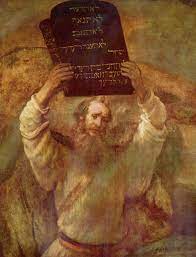
- ‘You did well, indeed, in just two words: “Elephantine Blunder”! Now that this topic has come up, let me say that on this particular Sunday [12/9/22] our priest explained at length all the mighty attributes of the 'lord': the fine eyes, trunk, the arms and the articles they are holding, the big paunch, the carrier-vehicle, the first transplantation surgery, and the broken tusk – and went on to say that all these attributes are already Catholic and we should have no qualms about it […] Lord, have mercy on us! …’
- ‘I totally agree with you. Thanks for raising your voice against paganisation in the Church.’
- ‘This is one of the reasons why other sects such as New Life, many self-proclaimed ministries, attack the Church, stating that she's impure. The Church is not impure, she is holy; but just because of some fallback/practices done by some of the religious ministry – such as this idolatry – she takes a hit. It is so sad. God bless us.’ – [Fwd]
- ‘[…] I have stopped looking at what they are doing and read and teach Jesus’ Gospel Word. Please follow and try to obey Jesus New Testament Word. If you don't mind, I will send you some Word from Jesus Gospel […] I have spoken to the [clergy] and find that they do not have the Holy Spirit to understand Jesus’ Gospel, so let us forgive them and work to understand Jesus’s Word for our own Salvation.’ – My reply: We can’t overlook what they are doing! They are supposed to show the way; they hold souls in their hands… Forgiveness is one side; Justice is the other. And this is what we want… God also wants us to be alert and stop being naïve. They are pulling the rug from under our feet... Counter-reply: The Devil also uses people in authority to build his own church.
- ‘Just because the position is facing the idol in no way does it mean he is praying to the idol. I would like to bring to your attention that Jesus narrated the three parables to the Pharisees who considered themselves better than the tax collectors and other sinners… Pictures deceive. I know very well that he has caused no scandal. Again, I say the prodigal son's parable was addressed to the pharisees who made life difficult for others.’ – PRIEST [Fwd] – My comment: The priest is clearly in prarthana position. And it is reported that he led the parish youth to pray and sing (hymns from Gaianancho Jhelo).
- ‘This is abominable. Who is this priest?’
- ‘[Your article] has been a big blow to false inculturation and to the pan-ecumenical revolution.’
- ‘To me, it looks as if Ghar Whapsi has begun in Goa.’
- ‘[...] a total abomination in the sight of our Living God. This is so utterly disgraceful... Bowing to [...] idols by a Catholic clergyman. Shame on him and the system he follows...’
- ‘Oh, my goodness! Where was this? That’s so alarming. This is actually against our First Commandment, is it not?’
- ‘[…] And since these are teachers/Shepherds who lead the faithful in idol worship they will be severely judged as Jesus has already stated. God! This is so scandalous and we thought only [...] were idol worshippers...’
- ‘[...] next time do not share items against the Church... By sharing we become part of those who are against us...’ – PRIEST [Fwd] – My comment: What a shallow remark! Well, this is not against the Church but against a scandal performed by a Priest, tarnishing the image of a true Pastor… Were the Popes who condemned Luther and the Modernists enemies of the Church?
- ‘It’s good that you called this out. About time that someone did it… Maybe you should send it to Dr Taylor Marshall!’
- ‘So, this is one of our own priests!... Really!!... And is our Archdiocese not aware? I wasn’t!... That amounts to testing Almighty God Himself… Shudder at the thought… We have no Moses anymore… It cannot be an accident that the very First Commandment covers this issue… it means that this is topmost on the list of God’s mind.’
- ‘You are so right to express your justified anger against this idolatry despite God's express Command. God must have mercy on us, before His wrath consumes us!...’
Finally, I transcribe part of a comment from a priest holding a high position in the Church:
- ‘[…] I agree with you a hundred per cent that the photograph that you have published shows a priest whose “prayer posture absolutely begs an explanation.” He is seen praying with his body turned towards the idol. As ambiguous and compromising as his prayer posture may be, would you like to think, even for a second, that he is saying something like, “O Lord Ganesha, please hear our prayer”? At least I would not.’ – PRIEST – My reply: ‘Thank you, […]! I don't wish to guess what the priest is saying, much less put words in his mouth. He will have to give an account to God. But a pic is worth a thousand words, hence the criticism on social media. It has its reason for being.’ – PRIEST: Agreed.
(To be continued tomorrow)
Banner: https://www.nationalgeographic.com/culture/article/aaron-brother-moses-worshipped-golden-calf
Goencheo Mhonn'neo - II | Adágios Goeses - II
October 6, 2022Sayings and Proverbs,Goan Literature
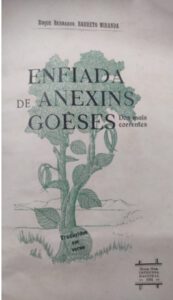 Neste número, em continuação do anterior (Revista da Casa de Goa, 2022, II Série, No. 17, pp. 35-38), divulgamos mais adágios seleccionados e traduzidos, do valioso repositório bilíngue (concani-português), Enfiada de Anexins Goeses, da autoria de Roque Bernardo Barreto Miranda.
Neste número, em continuação do anterior (Revista da Casa de Goa, 2022, II Série, No. 17, pp. 35-38), divulgamos mais adágios seleccionados e traduzidos, do valioso repositório bilíngue (concani-português), Enfiada de Anexins Goeses, da autoria de Roque Bernardo Barreto Miranda.
Entretanto, no texto que segue, note-se seis vocábulos portugueses concanizados: Entrudo; Páscoa; festa; cruz; experimentar; letrado. É que o português e o concani mutuamente se influenciaram.
| Tradução literal | Tradução livre | |
| Moddvol’achém moddém bâ’yr kaddlyâ bagôr, kãy colo’na. | Só quando vai-se enterrar
um mainato, se avalia se era ou não do próprio, a roupa com que em vida se vestia. |
Há oportunidades
que mostram realidades.
|
| Roddtyâ dadlyak ani hanstê baylek patiyevum na ye. | Do homem a chorar
e da mulher que ri, é bom desconfiar. |
|
| Anddir assá cheddó, sodunk bountá sogló vaddó. | Tendo o filho à ilharga, vagueia
a buscá-lo por toda a aldeia.
|
Quem não anda com tento e atenção,
não nota até no que está junto à mão. |
| Sat’tê fuddém xahaneponn kityak upcara na. | Ante o poder ou pressão,
não prevalece a razão. |
|
| Mas khailolém Intrudak, dênk ayló Pascanchyá-festak. | Comera carne
Na ocasião de Carnaval E teve arrôto No dia da Festa Pascal.
|
Atribuir, sem razão,
o resultado ou efeito a uma causa de ficção. Variante A coisa passou outr’ora, e vem tratar dela agora. |
| Dilolém naká, sanddlolém zay. | Não quer quando é of’recido,
E quer, quando está perdido. |
Quando tem, não aproveita,
rejeita a utilidade, e quando há falta, sente a sua necessidade. |
| Anthurun pormaném pãyem sôddche. | Conforme a cama
que possuir estenda os pés para dormir. |
Para governar-se sempre bem,
Tem que viver-se co’ o que tem. |
| Moddlolyá kursák kon mann di na. | A cruz, que se vê quebrada
por ninguém é respeitada.
|
A quem deixou de ser rico ou potente,
festas e adulações não faz a gente. |
| Goroz zaly, voiz meló. | Conseguido o objectivo
morreu o facultativo.
|
Obtido o favor
já não mais se lembram do seu benfeitor. |
| Experimentar zalyá sivay, letrad zay na. | Sem experiência ter
letrado não chega ser.
|
É sempre p’la observação
Ou prática, que das coisas Se tem a melhor noção. |
(Publicado na Revista da Casa de Goa, Série II, No. 18, Setembro-Outubro de 2022, pp. 33-34)
Rekindling our charisms
The readings of today invite us to nurture great faith in the Lord God who is our Creator, Master and Saviour. However much we may feel discouraged at times, or even lose sight of the path to follow, let the spirit not dry up within us. We have to persevere in faith.
In the First Reading (Hab 1: 2-3; 2: 2-4), Prophet Habakkuk voices the feelings of the people; in his lamentations, he resembles Job and Jeremiah. He wonders if the Lord has forgotten His people, especially the just and the innocent ones. They cry for help but He does not hear; they are about to be destroyed, but He does not save! Finally, Habakkuk conveys a divine message: ‘If it seem slow, wait for it; it will surely come, it will not delay. Behold, he whose soul is not upright in him shall fail, but the righteous shall live by his faith.’
What a lesson for those of little faith! We expect God to do things for us, but what is our contribution to extending His Kingdom on earth? Do we heed His commandments? Do we stand by Him at all times? Jesus tells those who want Him to increase their faith, ‘If you had faith as a grain of mustard seed, you could say to this sycamine tree, “Be rooted up, and be planted in the sea”,’ and it would obey.
On the other hand, praying with faith does not mean imposing one’s personal wishes on Him who has given us that gift; praying with faith means readiness to accept His doctrine and His divine will. Yet, let none think we have done God a favour. In a spirit of love and deep humility, we must believe ‘We are unworthy servants; we have only done what was our duty,’ as the Gospel (Lk 17: 5-10) tells us. This can never be overstated, because it is human tendency to be self-satisfied that they have visited the sick, clothed the naked, fed the hungry!
The Church teaches that both faith and good works are necessary for salvation. Sometimes we are more concerned about showing love to our neighbour but care not about loving God. We take Him for granted. Very often, we fail to speak and stand for Him. Hence, the relevance of St Paul’s exhortation to Timothy (2 Tim 1: 6-8; 13-14): ‘… for God did not give us a spirit of timidity but a spirit of power and love and self-control. Do not be ashamed, then, of testifying to our Lord… guard the truth that has been entrusted to you by the Holy Spirit who dwells within us.’
That’s not always an easy thing to do, but with His help, we can! The Word of God demands great commitment. Moreover, there are secular ideologies at work, which are hostile to Christianity, and render Christian living difficult. Hence, it is important for a pastor that Timothy was, to preserve and faithfully transmit the doctrine of the faith. In a broader perspective, it is a timeless message for all of us who are priest, prophet and king, and have received ‘the gift of God’, the charisms that lie within us. We must not leave them idle; we have to rekindle them.
Does our Sensus Fidei need Renewal?
It is a matter of joy that religious faith and public opinion in Goa are not dead. Following a public scandal that the laity found it fit to highlight on social media, our archdiocesan bulletin, Renovação/Renewal/Novsornni (Renewal, for short), albeit unusually, responded editorially. The laity’s reaction to the scandal ranges from plain shock to utter disgust, but the editorial stance is one of blind defence and utter coldness to the laity’s cries for clarity on the subject, such as the Catechism of the Catholic Church provides.
Just how does Renewal get on with its defence? The editorial, titled ‘Being Living Witnesses of Christ’ (Vol. LX, No. 18), thrusts upon the readers, in a disjointed and unwieldly manner, a barrage of Church documents but maintains a studied silence on the main issue of concern: whether or not the elephantine blunder in Siolim qualifies as syncretism, idolatry and apostasy![1] It is a pity that the readers, instead of being shepherded to the refreshing waters of Catholic doctrine, are thus left thirstier than ever. So, just why can’t our ‘pastoral bulletin’ be a wee bit more pastoral in its approach?
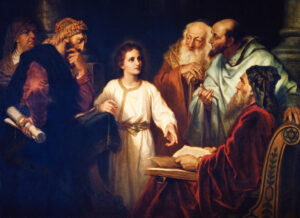
Is the editorial’s long-winded style indicative of a gulf that exists between the shepherds and the sheep? At any rate, the lead article plays the victim card and, in the same breath, censures the laity for alleged ‘ignorance’ and ‘arrogance’. It may even seem as though the editor is repulsed by ‘the smell of the sheep’ and ‘[in]capable of living, of laughing and crying with your people, in a word, of communicating with them.’[2] Isn’t the church organ falling short of instructing the ignorant as a spiritual work of mercy? And how can the spirit of ‘dialogue’ be allowed to vanish into thin air, as it often happens when it is about dialoguing with the internal public! And how come the full import of a layperson as ‘priest, prophet and king’ suddenly seems unpalatable?
The fact of the matter is that, faced with the public scandal of priests adoring the Ganesh deity, Renewal has evaded the question. Sadly, the editorial misquotes Biblical passages and misses out relevant ones – just as it fails to cite pre-Vatican II documents to buttress the case, if any. (Why? Is the church today a far cry from the pre-Conciliar one?) Then, the editor cites papal and archdiocesan documents that supposedly come in his defence but, really speaking, none of them endorse idolatry – they just can’t! He mentions the CBCI commission for ecumenism and dialogue; several conferences and seminars (on non-Biblical scriptures, on sharing of worship, etc.), but he overlooks the fact that these bodies have no magisterial authority. In this regard, it is interesting to read what Cardinal Ratzinger has to say about episcopal conferences in the Ratzinger Report.[3]
The editor also refers to the first Plenary Council of India (1950), but makes no mention of its rejection of religious indifferentism and of the syncretist view that the religion of the future will be a synthesis of the good elements of all religions. And as for the All India Seminar on Church in India Today (1969), for the implementation of Vatican II in India, Valerian Cardinal Gracias had a word of caution as he presented 1668 pages of preparatory material: ‘If fifty years hence there is to be another Ecumenical Council, it seems to me that the Bishops, the Clergy, the Religious, the laity of that period would be in a privileged position having at hand this abundant material, unless they – which is possible – consider then all this outdated or – which is not improbable – after bitter experiences in experimentation, decide to revert to Vatican I!’[4]
Prophetic words! It may be noted that the seminars mentioned in the editorial have been forums for diffusion of theological errors, which His Eminence the late Jozef Cardinal Tomko denounced at the Fourth Extraordinary Consistory, a meeting of the world’s cardinals, in April 1991. The then Prefect of the Congregation for the Evangelization of Peoples called the bluff of the ‘doctrinal confusion regarding the content of faith’, specifying ‘a gnostic relativism and a theological misunderstanding which levels all religions.’
The said Cardinal pointed out that some theologians ‘have developed unacceptable and destructive doctrines’ that are ‘reducing evangelization to mere dialogue and development, with the abandonment of proclamation, catechesis, and logically, conversions and baptisms. They strongly confirm the basis and justification of two phenomena denounced in the encyclical Redemptoris Missio: “a widespread indifferentism” and “a religious relativism” which leads to the belief that “one religion is as good as another” (n. 36)’
Adding that, by such doctrinal standards, evangelization ‘would consist solely in dialogue, inculturation and liberation,’ His Eminence alerted us to the fact that, ‘according to some Indian theologians, in the search for dialogue, Jesus Christ divides rather than unites’; and that ‘to dialogue as equals, either Jesus Christ is downgraded by not mentioning His divinity, or the founders of other religions are exalted making them quasi-incarnations of God.’ He stated these tendencies have Asia as their ‘main territory’ and India as the ‘epicentre’, and warned against the ‘simply devastating’ consequences of those doctrines.
Those promoting this destructive theology believe that ‘the universal mystery of salvation is accomplished through all religions.’ Cardinal Tomko warns us against those who see salvation as a form of ‘utopia’ that would ‘unite everyone in a community of love, justice and peace’.[5] Three decades down the line, his words are still a providential and urgent warning about the modern errors. A case in point is that heady mix of religious symbols depicted on the cover of Renewal, inscribed with the words ‘Only Love Unites’ – in an awkward bid to equate all faiths. In practical terms, the consequences of such a relativist agenda are there for everyone to see: weakening of the faith and moral decadence; lack of attention to Church Tradition; syncretism, relativism, secularism, and so on. When will the authorities see the writing on the wall?
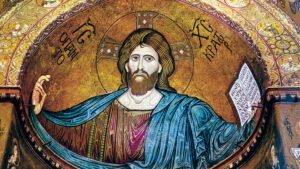
Finally, what does it profit us to build bridges with other religions and their public and forsake our own religion and people? This is a question on the lips of every Catholic worth his salt. We are called to be the light of the world and salt of the earth. Whatever be the ‘perennial values’ of other religions, as peddled by the editorial, nothing can surpass the supreme values of our Faith. Our minds and hearts are made for the One True and Living God, Jesus Christ, Who is the Alpha and the Omega; the Way, the Truth and the Life; the Only Saviour of the World, and the very reason of our being. It is inconceivable to us that a Catholic bulletin should ever mince words on this most basic tenet of our faith. It is an attempt to strike at the very foundations, yes, but those proud of the Faith that they have inherited and to which they now belong shall not consent to its liquidation!
Therefore, let’s hold strong to our Catholic identity. Let none persist in the present folly, playing into the hands of New Age movements and the New World Order with sinister agendas. And beware of the false knowledge they provide – which is more dangerous than ignorance! It is simply absurd to blindly apply new-fangled theories, or worse still, to expect that they will be swallowed by the faithful, and all the while fail to set our eyes on the final good of the soul.
Wouldn’t it be wiser, then, to heed the Pontiff, who said, ‘Strip yourselves of your pre-constituted ideas, your dreams of greatness, your self-assertion, in order to put God and people at the centre of your daily concerns’? He further counsels the priests who would like to be intellectuals, not pastors, to be lay persons instead.[6] It would probably help trigger a great renewal of their sensus fidei (sense of the faith), eventually inspiring everyone to become what the editorial envisages – ‘Living Witnesses of Christ’ fully participating in the life of the Church, with responsible adherence to the Magisterium, to the deposit of the faith.[7]
Feast of St Therese of Lisieux, Patron Saint of the Missions, 1 October 2022.
--------------------------------------------------------------------------------------------------------------------------------
[1] https://www.churchmilitant.com/news/article/goa-new-cardinal-winks-at-ganesh-idolatry
https://www.oscardenoronha.com/2022/09/13/elephantine-blunder/
https://www.churchmilitant.com/news/article/cardinal-rebuked-for-homage-to-hindu-idols
https://www.churchmilitant.com/news/article/diocese-defends-clergy-visits-to-hindu-idols
https://www.youtube.com/watch?v=QfJOusrKWrY
Accessed 30 September 2022
[2] https://catholicnews.ie/pope-francis-to-priests-be-shepherds-with-the-smell-of-the-sheep/ Accessed 30 September 2022
[3] ‘We must not forget that the episcopal conferences have no theological basis, they do not belong to the structure of the Church, as willed by Christ, that cannot be eliminated; they have only a practical, concrete function,’ in Ratzinger Report: an exclusive interview [with Vittorio Messori] on the State of the Church (digitized by the Internet Archive in 2011, http://www.archive.org/details/ratzingerreporte00ratz p. 59
[4] Welcome Speech, by Cardinal Valerian Gracias, All-India Seminar: Church in India Today (New Delhi: CBCI Centre, 1969) p. 434.
[5] All quotations pertaining to Jozef Cardinal Tomko are taken from L’Osservatore Romano, No. 15, 15 April 1991, p. 4; and The Examiner, 22 April 1991.
[6] https://catholicnews.ie/pope-francis-to-priests-be-shepherds-with-the-smell-of-the-sheep/ Accessed 30 September 2022
[7] Cf. Pope Benedict XVI’s speech to the International Theological Commission, on 7 December 2012, https://www.vatican.va/content/benedict-xvi/en/speeches/2012/december/documents/hf_ben-xvi_spe_20121207_cti.html Accessed 1 October 2022
Spare a thought for the other!
September 25, 2022Mass Readings
What a mighty God we serve! Whether we have won a fortune or suffered a misfortune, He conveys a message meant to open our eyes and help mend our ways. In the last two weeks, when we witnessed the tainting of two hallowed arenas (read ‘Elephantine Blunder’ and ‘Mother of all crises’ in this blog) – the respective Sunday readings were spot on! But did those concerned take a leaf from the Book of Books? This Sunday, God in His infinite mercy gives us another chance.
The First Reading (Amos 6: 1.4-7), once addressed to the nobility of Israel, is now a message for Everyman, be it in Goa or California. Prophet Amos admonishes those who only eat, drink and make merry; ‘lie upon beds of ivory and stretch themselves upon their couches’, and show least concern for their suffering brethren. They are beneficiaries of God’s munificence, yet ‘are not grieved over the ruin of Joseph!’ (a reference to the ten tribes of Israel with whom Joseph’s name became synonymous).
The Second Reading picks up where the previous one left off. St Paul (1 Tim 6: 11-16) advises the faithful to ‘aim at righteousness, godliness, faith, love, steadfastness, gentleness.’ How many of us love the truth in its fullness; stand by God at all times; live in deep faith; show love to family and friends; are committed; and, without a hint of pride, are fortiter in re, suaviter in modo – firm in action, gentle in manner?
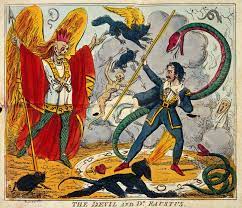 The Gospel (Lk 16: 19-31) puts it all so vividly in a parable. An unnamed rich miser who cared for none but himself is plagued in hell; whereas poor Lazarus, once at his mercy on earth, enjoys the Beatific Vision. As Mephistopheles says in the last Act of Marlowe’s The Tragical History of Doctor Faustus: ‘Fools that will laugh on earth must weep in hell.’ Perhaps the rich man’s only charitable thought consisted of a request to God to warn his family, ‘lest they also come into this place of torment.’
The Gospel (Lk 16: 19-31) puts it all so vividly in a parable. An unnamed rich miser who cared for none but himself is plagued in hell; whereas poor Lazarus, once at his mercy on earth, enjoys the Beatific Vision. As Mephistopheles says in the last Act of Marlowe’s The Tragical History of Doctor Faustus: ‘Fools that will laugh on earth must weep in hell.’ Perhaps the rich man’s only charitable thought consisted of a request to God to warn his family, ‘lest they also come into this place of torment.’
Finally, if the popstar believes that ‘Heaven is a place on earth’ and ponders the ‘mystery of living’; it is equally important to contemplate the mystery of death. Today, St Luke has invited us to examine the transition from earth to eternity, and work towards a change of heart. St Paul has highlighted God’s Kingship vis-à-vis the sinful practice of paying tribute to false gods. He warmly exhorts us to heed God’s Word, ‘fight the good fight of the faith’, and praise to the Lord Who gives life to all things, ‘Who alone has immortality and dwells in unapproachable light’. Meanwhile, let's spare a thought for the other and we will receive a hundredfold.
Between London and Rome
September 24, 2022Save our Faith
The funeral ceremonies of Her late Majesty Queen Elizabeth II were a sight to behold. They summoned up Wordsworth’s lines about the grandeur of London in the early nineteenth century:
Earth has not anything to show more fair:
Dull would he be of soul who could pass by
A sight so touching in its majesty…

What prompted billions across the globe to be glued to their screens during the week-long obsequies? It was heartening to see the religious conviction of a modern monarchy; consoling to watch grief and gratitude enfolded under a magnificent blue sky; and to appreciate the amazing dignity and grace of regalia. The ceremonials were a fitting tribute to a monarch who valued truth, goodness and beauty, Christian virtues par excellence. As in life, so in death.
As I looked at commoners in never-ending queues filing past the Queen’s coffin with a bow before, my mind travelled back in history. Britain was a seat of the Roman Catholic faith from the third century onwards. In circa AD 1601, Ethelbert of Kent became the island’s first Catholic king. Other kings followed suit. Interestingly, Elizabeth II could trace back her lineage to the first king of all of England, Athelstan (895-939 AD), and his father Edward the Elder and grandfather Alfred the Great, of the House of Wessex.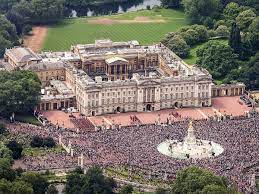
Clearly, neither monarchy nor Christianity was foreign to Britain. The country had a long communion with Rome, but alas, King Henry VIII ended it in AD 1534, forming the Church of England, also known as the Anglican Church. However, much of the Roman Catholic tradition persists, being particularly close to the hearts of the Anglo-Catholics, products of the Oxford Movement led by John Henry Newman, who later converted to Catholicism and became Cardinal. That ensures that Britain remains Rome’s closest natural ally.
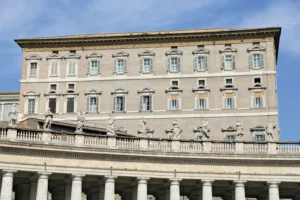 Another facet that unites Britain and Rome is the institution of the monarchy. Whereas the former is now a constitutional, hereditary monarchy, whose titular, historically, was granted the title ‘Defender of the Faith’ by the Parliament; the latter is an elective, non-hereditary monarchy, in which the Pope is the leader of the Universal Catholic Church. While in Britain, the ability to make and pass legislation resides with an elected Parliament, in Rome the Pope has ‘the fullness of legislative, executive and judicial powers’, aided by cardinals, regarded as ‘princes of the Church’.
Another facet that unites Britain and Rome is the institution of the monarchy. Whereas the former is now a constitutional, hereditary monarchy, whose titular, historically, was granted the title ‘Defender of the Faith’ by the Parliament; the latter is an elective, non-hereditary monarchy, in which the Pope is the leader of the Universal Catholic Church. While in Britain, the ability to make and pass legislation resides with an elected Parliament, in Rome the Pope has ‘the fullness of legislative, executive and judicial powers’, aided by cardinals, regarded as ‘princes of the Church’.
In a world not very acquainted with monarchies, it is never too much to underline that the monarchical state draws from an ancient principle evident from the Bible (and non-Christian cultures as well): that monarchs were chosen by God to rule His people. While Queen Elizabeth II has had close to forty generations of monarchs preceding her over the last thirteen centuries, Rome has produced 266 Popes since the first century.
Numbers apart, whether or not monarchies are still relevant in the contemporary world is a more important issue. Indeed, it appears that a well-functioning monarchy is a great asset. Unlike elected representatives, monarchs rise above the uncertainties of the next election and focus on the next generation. As upholders of tradition, they instil a sense of pride in the people and offer stability in troubled times. Considering that most of the monarchies today have a constitutional status, it is hardly likely that they should turn tyrannical.

Britain’s Queen of happy memory presided over one of the longest functioning monarchies in the world. For her part, the Catholic Church is unique in showing how a head of state can have a monarchy with a blend of aristocratic and democratic elements too. St Thomas of Aquinas recognised the value of a king – “a shepherd seeking the common good of the multitude” – but strongly opposed an absolute monarch. How it will all pan out, with a new monarch in London and a Synod on Synodality coming up in Rome, only time will tell.
Banner: https://medium.com/@steverob1066_3899/non-angli-sed-angeli-a1a3d1f7656c
